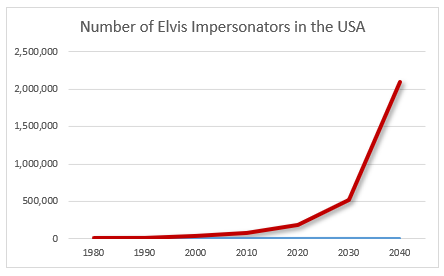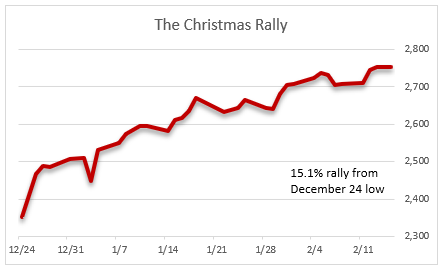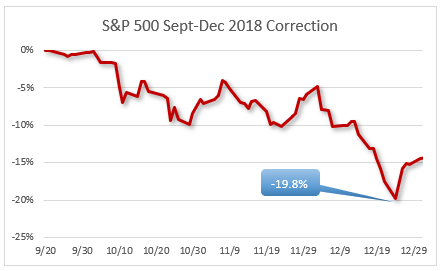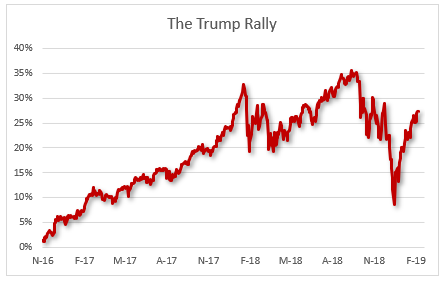You've heard it before: There are three kinds of lies:
there are lies, there are damn lies, and then there are statistics.
87% of Americans believe that it was Mark Twain who said this. Well, that's just another statistic, right? Is it one of Mark Twain's three kinds of lies? Or is it the truth?
This article deals with the misuse of statistics in the investment business. I argue that anyone can use statistics to support a claim, no matter how far from the truth that claim may be. It happens all the time, and it shouldn't surprise anyone.
A few examples to whet the appetite
I begin with a few easy-to-understand examples of how the financial media and others spin, distort and manipulate the data to serve their own agendas. The agenda could be ginning up drama to get more viewers or eyeballs, or it could be making a bold claim that could land an interview in the financial media, or it could be bolstering the case for selling a financial product to unsuspecting consumers.
Example 1. Elvis Impersonators
One of my favorite examples of statistical manipulation is the increase in the number of Elvis Impersonators in the U.S. These statistics are not made up out of whole cloth, they come from the IRS and reflect those who claim Elvis Impersonator at their primary or secondary source of income.
In 1977, the year Elvis died, there were 2,500 impersonators operating in the US and abroad. In 1980 that number had grown to 4,000. In 1990 it was 12,000. In 2000 it was 32.000. In 2010 it was 84,000. And so on.
Statisticians who apply a simple extrapolation line to this growth rate will arrive at the conclusion that by the year 2100, one out of three Americans will be full time Elvis Impersonators.
Example 2. Using time frames to support a bullish view
OK, that was fun, but let's turn our attention to what's happening today in the market. This first chart tracks the rally that began on Christmas Eve 2018. If you are trying to make the case that the correction is over and good times are ahead, this is the chart you would use.
A 15.1% rally in less than 2 months is a big deal. It scares the pants off the shorts. And it causes the bearish commentators to doubt their assertions. Score one for the bulls.
Example 3. Using time frames to support a bearish view
Those market pundits who are of the bearish persuasion won't use the above chart in their analysis. Instead they'll use the below chart that shows just how nasty the recent correction was. The market stopped just short of bear territory, dropping 19.8% in 3 months.
The bearish argument goes something like this: Last fall the market suffered a severe body blow, and the rally since then is down to an oversold bounce. Well, maybe. Only time will tell.
Example 4. Using time frames to support a political bias
The chart below could be used by either side of the Trump debate. Trump supporters could point out that the market is 27% higher than it was when he took office. True.
Trump critics could point out that the Trump Rally peaked in September 2018 and is struggling to retake the high ground. Also true.
Each of these cohorts is using their political bias to paint their own picture of what the facts are saying. This is the nature of statistical manipulation to support a biased point of view.
How to avoid falling into a statistical trap
I've been doing this for a long time, and one thing I've learned is to do my own due diligence rather than swallowing whole what pundits with agendas have to say. It's not that hard to do.
You can begin by avoiding any pundit who has a political bias. Politics and investing don't mix.
Next you can widen your own time frame... a lot. Don't fall for assertions that recent market action means anything. It's just noise. In my own study, I go back to 1928. I don't suggest you do the same, but go back at least to 2000 so that you include the last two major bear markets and recessions.
Lastly, any time a pundit trots out a statistic to support an argument, ask yourself if he or she might be cherry-picking data or extrapolating future trends, or simply manipulating you to go along with their point of view.
It's a rough world out there, especially in the investment business. Be skeptical. Be thoughtful. And, as Dylan said, "Don't follow leaders, and watch the parking meters."




